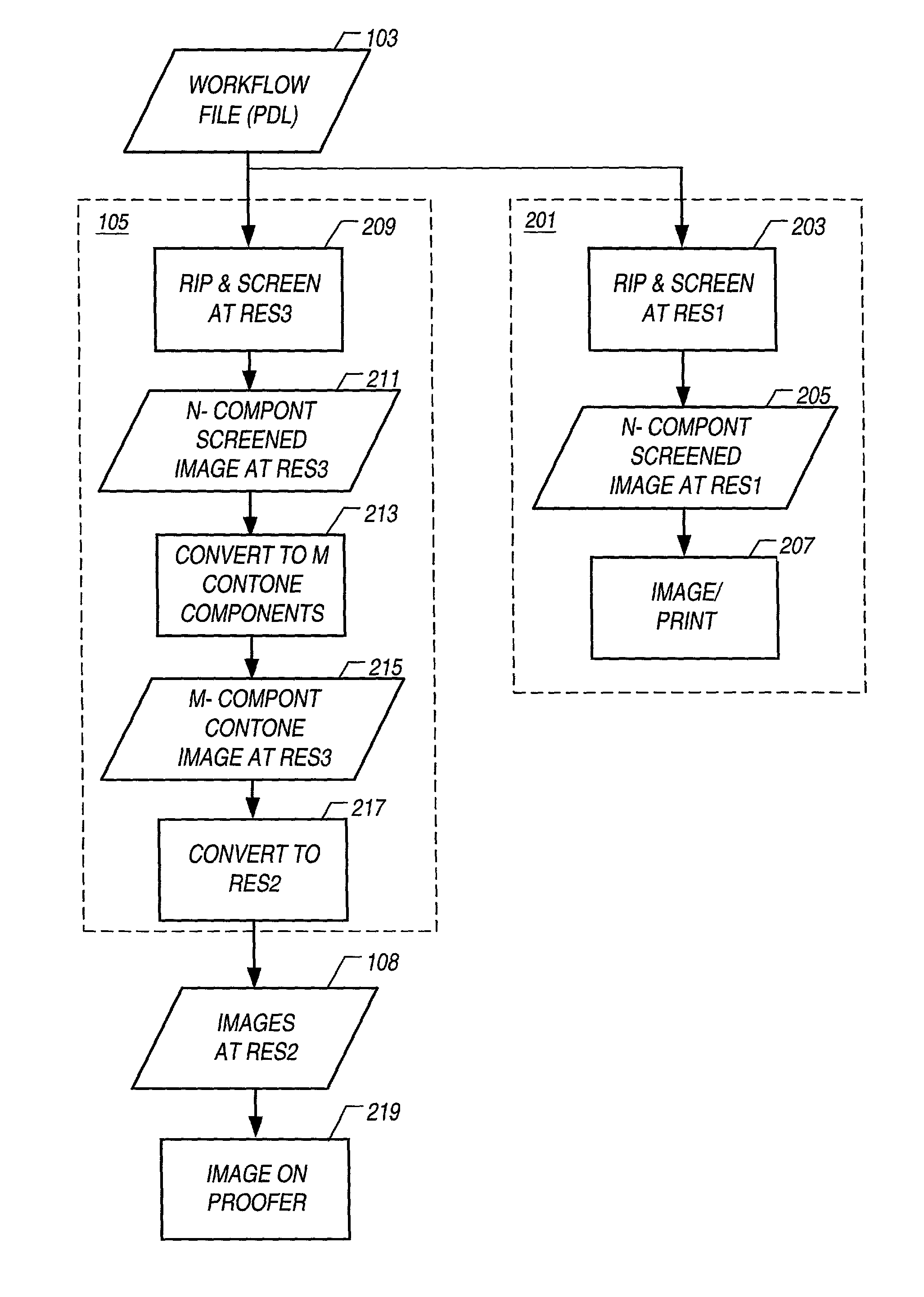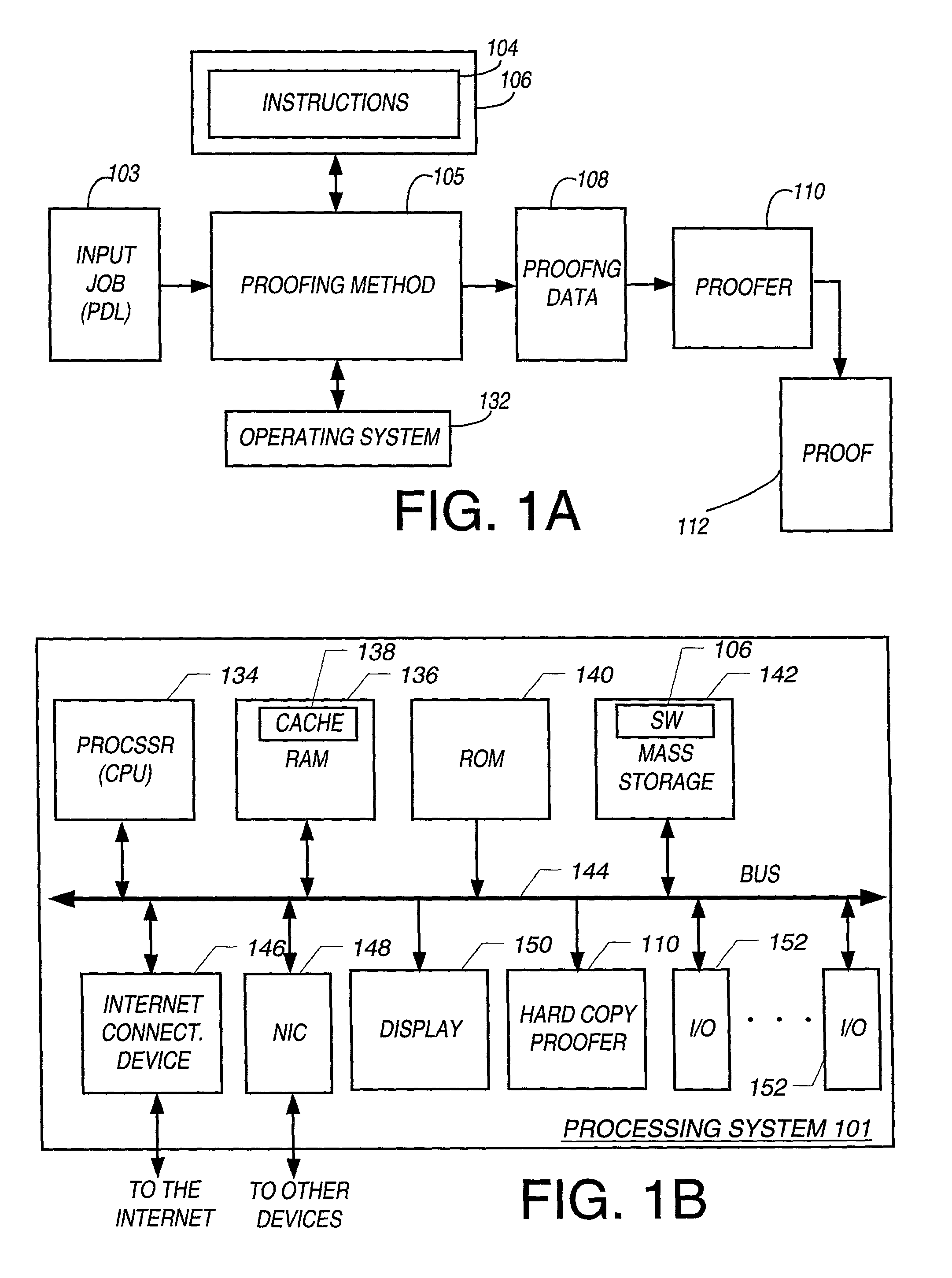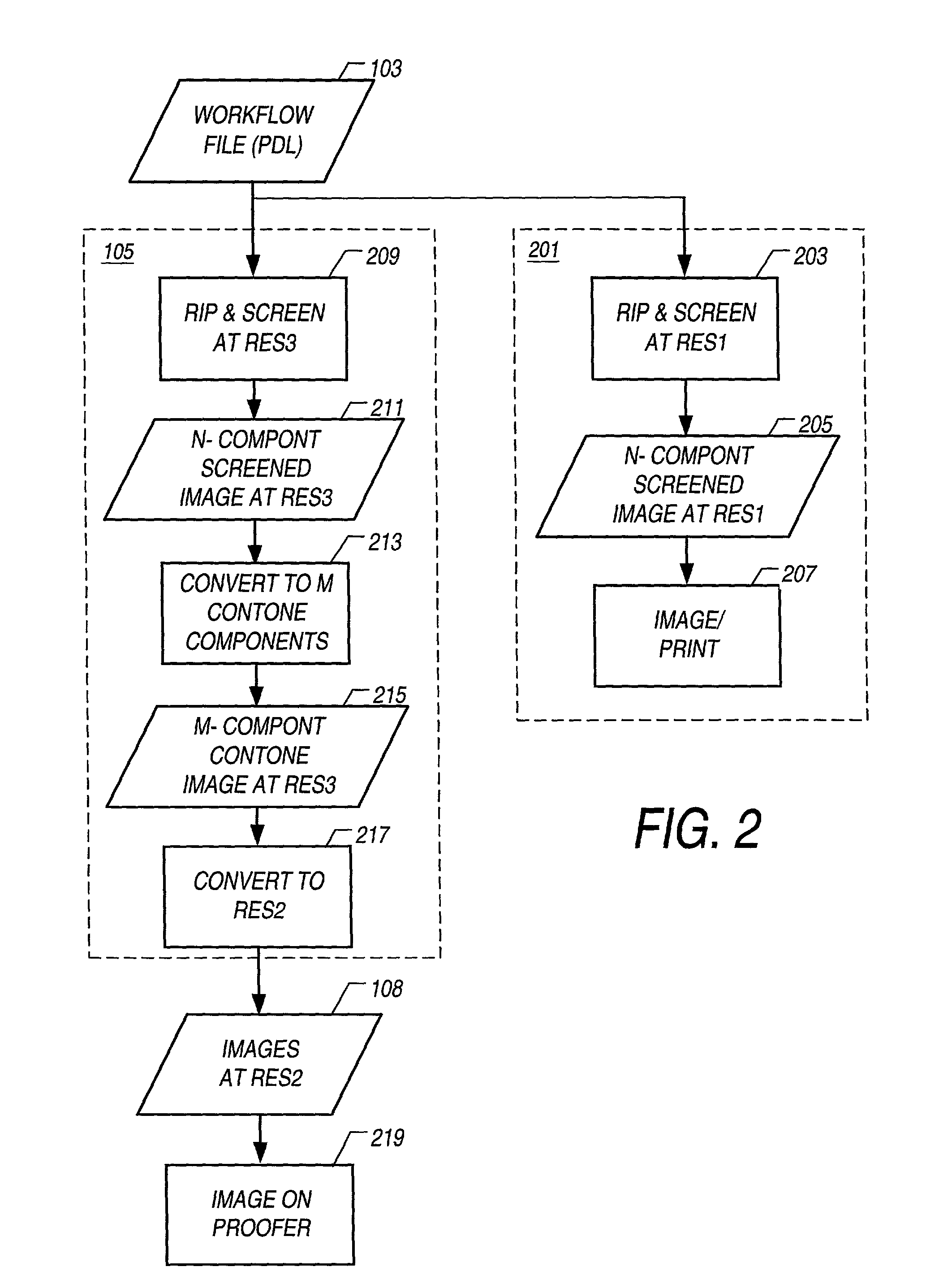Proofing method, apparatus, and computer software product matching color and halftone screen properties
a technology of color and halftone screen and proofing method, applied in the direction of electrical equipment, electric digital data processing, instruments, etc., can solve the problems of low resolution, serious attempts to get proofs with the correct screens, and inaccurate representation of screening
- Summary
- Abstract
- Description
- Claims
- Application Information
AI Technical Summary
Benefits of technology
Problems solved by technology
Method used
Image
Examples
Embodiment Construction
[0061]Referring to FIG. 1A, one embodiment is a proofing method 105 that operated on an input 103. Note that a “method for proofing,” a “method to proof,” and a “proofing method” herein each refers to preparing the data for output on a proofing device, and also to the combination of the steps of preparing the data for output on a proofing device and generating the proof on the proofing device. The input 103 may be a job 103 for proofing provided as a Page Description Language (PDL) file 103 for output printing at a printing resolution, denoted herein as RES1, which typically is expressed in dots per inch (dpi). The process of producing final output from the input 103 is called “output imaging” herein. The output imaging typically includes imaging on a film or plate for final printing on a printing press. The input 103 is assumed to be defined in a number of base colors, and this number is denoted by B herein. The final printing of the output imaging, e.g., on the printing press, use...
PUM
 Login to View More
Login to View More Abstract
Description
Claims
Application Information
 Login to View More
Login to View More - R&D
- Intellectual Property
- Life Sciences
- Materials
- Tech Scout
- Unparalleled Data Quality
- Higher Quality Content
- 60% Fewer Hallucinations
Browse by: Latest US Patents, China's latest patents, Technical Efficacy Thesaurus, Application Domain, Technology Topic, Popular Technical Reports.
© 2025 PatSnap. All rights reserved.Legal|Privacy policy|Modern Slavery Act Transparency Statement|Sitemap|About US| Contact US: help@patsnap.com



